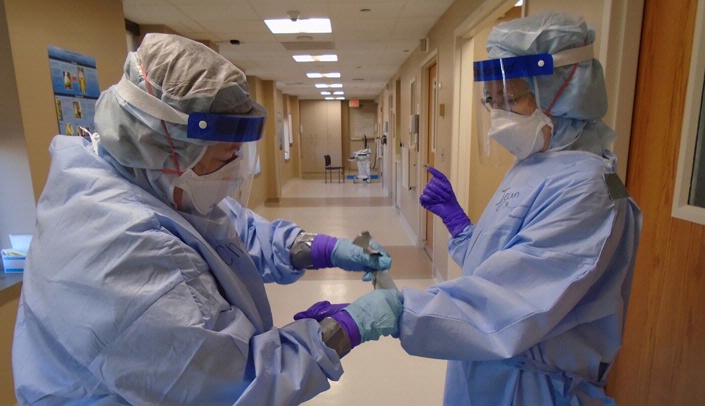Local, state and national agencies will take part in a full-scale exercise over the course of four days to evaluate and test the ability to provide international medical transport for multiple patients with a highly infectious disease.
Preparedness efforts ongoing
It was recently announced that Nebraska Medicine and UNMC were the recipients of a $20 million federal grant to develop a national training and quarantine center for highly infectious diseases. While that facility won’t open until 2018, the preparedness effort is ongoing on campus, in Omaha, Douglas County and across the entire state.
The drill will involve the U.S. Department of State, U.S. Department of Health and Human Services, Phoenix Air Group, The National Strategic Research Institute (NSRI), Nebraska Biocontainment Unit, Douglas County 911, Douglas County Emergency Management, Nebraska Public Health Laboratory, Nebraska State Patrol, Omaha Police Department, Omaha Fire Department, Omaha Airport Authority, Douglas County Health Department, and the Nebraska Department of Health and Human Services.
Omaha exercise activities will take place on Friday, Nov. 18 at Eppley Airfield with the arrival of three “patients” on a 747 equipped to simultaneously transport and contain multiple highly infectious patients. In the case of this exercise, the Department of State receives notification that three U.S. aid workers have contracted an infectious disease and need to be evacuated from a hospital in Liberia to the United States.
The event was initiated by the NSRI and UNMC/Nebraska Medicine as part of an ongoing readiness program to ensure that the Department of State and the national infectious disease response infrastructure is prepared to manage patients exposed to emerging infectious diseases. This is a multi-faceted effort that will test aerial patient transport capabilities (including a newly developed system known as the containerized biocontainment system), test local infectious disease response activities, including air-to-ground patient transfer, patient transport, hospital reception and patient care.
“While we were successful in carrying out this process separately with three Ebola patients in 2014, this scenario involves several new drill objectives,” said Angela Hewlett, M.D., medical director of the Nebraska Biocontainment Unit and associate professor of infectious diseases at UNMC. “We want to make sure we’re prepared for as many real-world scenarios as possible.”
“This event is the second in a series of aerial patient transport efforts to test the Containerized Biocontainment System that was developed for the State Department by MRIGlobal and funded by the Paul G. Allen Foundation,” said Eric Van Gieson, Ph.D., chief technology officer for NSRI. “The Containerized Biocontainment System is a highly sophisticated patient isolation system that has a larger capacity than any previously used patient transport system and, as a newly developed system, it will need extensive testing to ensure maximum performance for when it is needed for transport of highly infectious patients.”
“This time around we will handle three patients at once,” said John Lowe, Ph.D., director of research and development for the Nebraska Biocontainment Unit and associate professor in the UNMC College of Public Health. “The patients will be transported in three separate ambulances using a completely new method of transferring the patients from the plane. The 747 will be much larger than the aircraft Phoenix Air used in the past, and that presents some challenges we haven’t faced before.”

The drill will also involve the Nebraska Public Health Laboratory which is part of the CDC's Laboratory Response Network for preparedness.